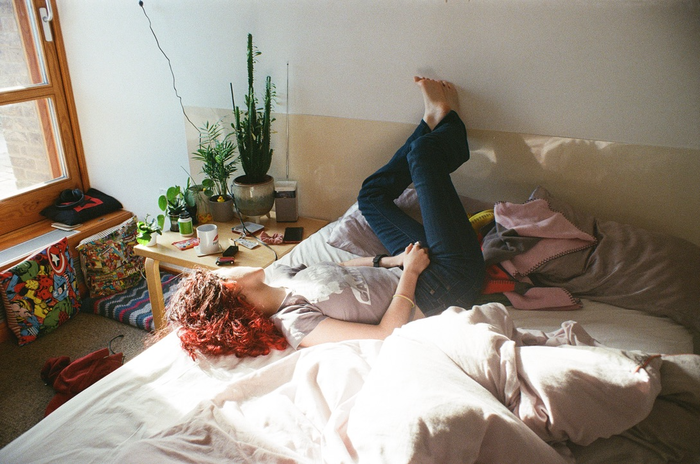The fact and fiction of photojournalism
Lily Owens looks at the many uses and abuses of photography and asks how it may change the journalism of the future

How much can a photograph really tell us? Ever since cameras were accessible enough to propose the possibility, photography has been rapidly integrating itself into our journalistic practice. Before photography (as we conventionally understand it today), engravings illustrated newspapers. We can easily sit back now and identify how fabricated these illustrations might have been, but how often do we consider the fabrication of images? In 2024, not only is photography circulating at an exponential rate (thanks to the algorithm), but those with access to cameras are increasing. The results can be both liberating and detrimental.
With the invention of photography came seeming promises of ‘objectivity’, and a method by which evidence could effectively supplement written news reports. In this sense, photojournalism can offer a number of advantages – visual proof has an undeniably immediate effect on the viewer. What’s more, it’s one of the fastest ways to consume information. Several snapshots of an event can be visually registered faster than you could begin to describe the contents of the photographs with words. In several cases, images have served to expose realities and lies. The 2020 ‘Partygate’ pictures are a case in point – it stings to see Boris and Rishi pig out on their picky bits while 46,736 COVID deaths occurred in the UK in the same month. The mass outrage those pictures sparked drew plenty of attention to the hypocrisy and failings of the government during the pandemic.
“Photojournalism can offer a number of advantages – visual proof has an undeniably immediate effect on the viewer”
Equally, with the wide dissemination of photographs comes a loss of authorship and context. Without facts like these, the grainy screenshots spread around on X (formerly Twitter) are limited by their own frames. As the viewer is left to their own devices for interpretation, they are also left to their own biases. When the appearance of a picture is all that determines its meaning, it’s important that we examine how these images might implicitly conform to questionable aesthetics governed by the creator’s own prejudices. When looking at images, we must be asking: what can a photo really tell us – and what can’t it?
Many images which appear factual are in reality staged, performed, and heightened for the camera. At the extremes, with the increasing capacity for AI and digital technologies to fabricate images at a high degree of realism, we run the risk of spreading entirely incorrect information. The rise of harmful deepfakes has disproportionately affected LGBTQ+ politicians and women politicians, particularly women of colour. Combined with the use of AI, these images can perpetuate racist, misogynistic and homophobic stereotypes onto their subjects. A 2024 study has also shown that age is one of the most common factors affecting an individual’s ability to identify an AI-generated image.
The recently circulating ‘All Eyes on Rafah’ Instagram story post is yet another example of the failings and dangers of AI images. At my time of writing, 36.7 million accounts have reposted an entirely fabricated image, symbolic of nothing but performative activism. This is nothing close to what Rafah looks like – there is no neat arrangement of intact tents under a calm sunset. This does not illustrate the bombs, the suffering, the torture, the starvation, the sickness, or the realities of extreme living conditions. While we might see that the image is AI, for many viewers it is contributing to a mystification of this terrible conflict.
“As the viewer is left to their own devices for interpretation, they are also left to their own biases”
When we take photographs of people, we rob them of the ability to speak for themselves – the camera silences them. However much we try to make valiant attempts to document the effects of violence to persuade people to take action, there are still ethical considerations that must not be ignored. In sharing photographs, we risk exercising a power that renders people into a spectacle of nameless faces. Recirculating images of victims of violence is not only a recirculation of trauma, but a likely invasion of the privacy of their non-consenting subjects.
A growing substitution of photojournalism for written journalism has seen both the compelling and limiting qualities of the practice. As a result, photojournalism is beginning to adopt a language of its own, to make up for what conventional photography can, and cannot express. Images have a gravity to them: they are the intersection between the personal and the political, presence and absence, distance and proximity. We must admit that there is an artistic quality to the language of images – an artistic quality that can be used or misused.
 News / CUP announces funding scheme for under-represented academics19 December 2025
News / CUP announces funding scheme for under-represented academics19 December 2025 News / Cambridge welcomes UK rejoining the Erasmus scheme20 December 2025
News / Cambridge welcomes UK rejoining the Erasmus scheme20 December 2025 News / SU reluctantly registers controversial women’s soc18 December 2025
News / SU reluctantly registers controversial women’s soc18 December 2025 Film & TV / Timothée Chalamet and the era-fication of film marketing21 December 2025
Film & TV / Timothée Chalamet and the era-fication of film marketing21 December 2025 News / News in Brief: humanoid chatbots, holiday specials, and harmonious scholarships21 December 2025
News / News in Brief: humanoid chatbots, holiday specials, and harmonious scholarships21 December 2025









